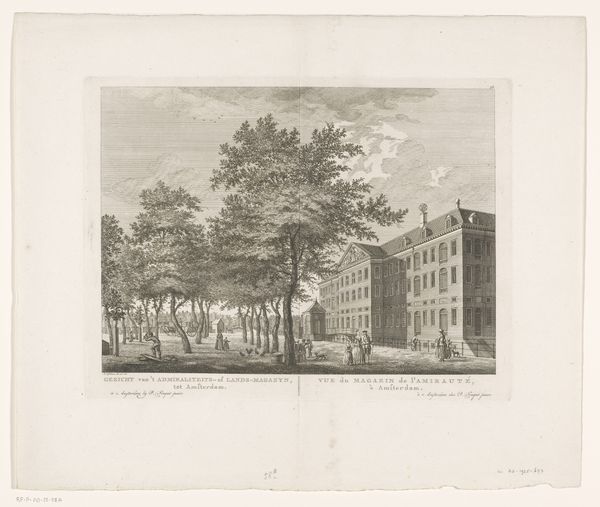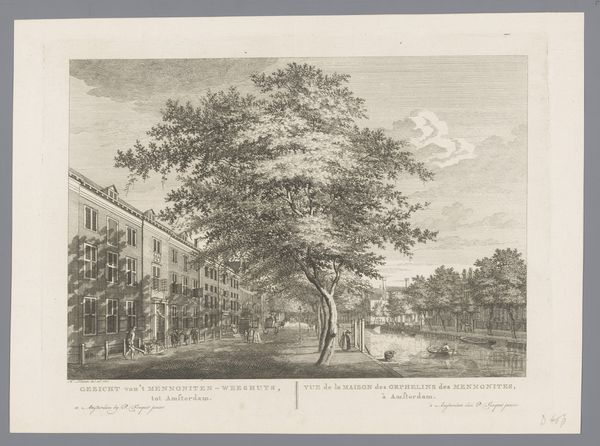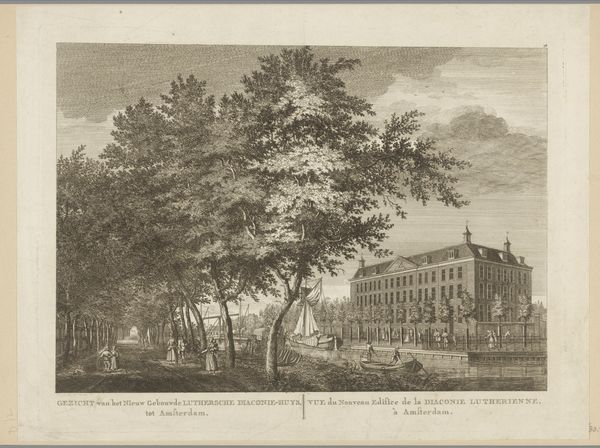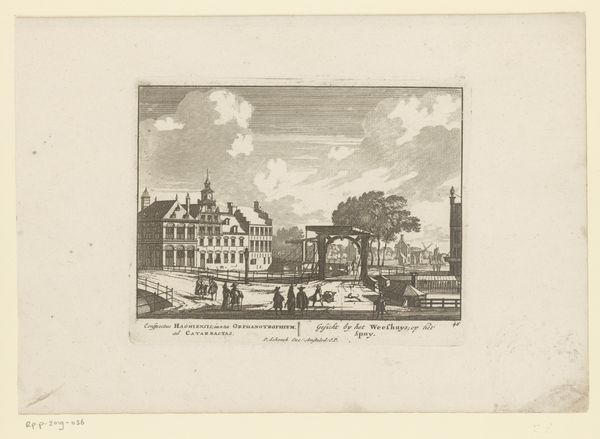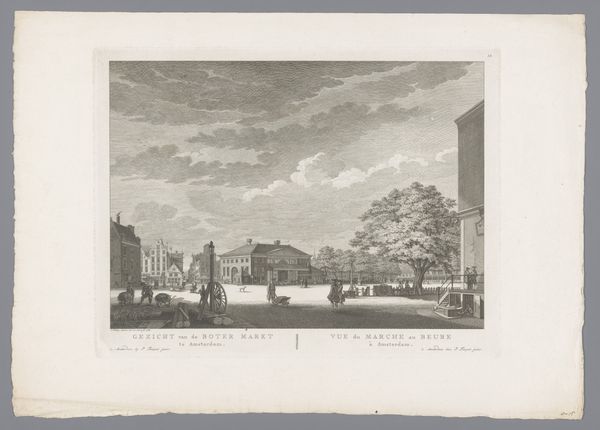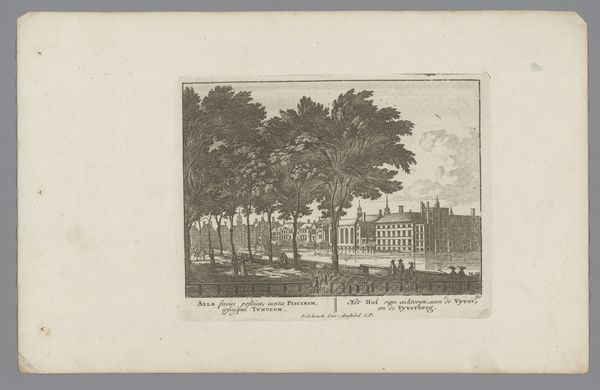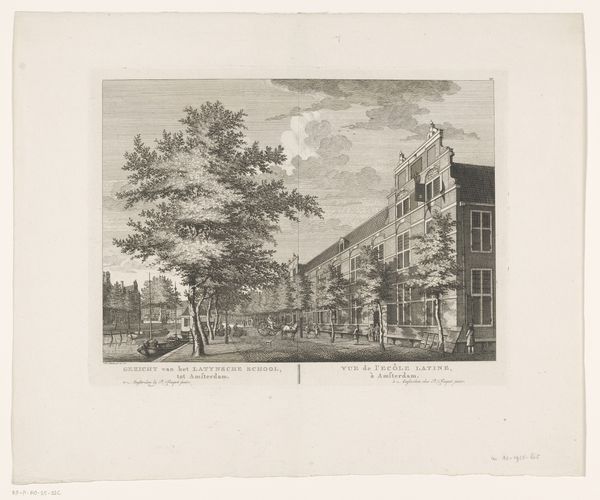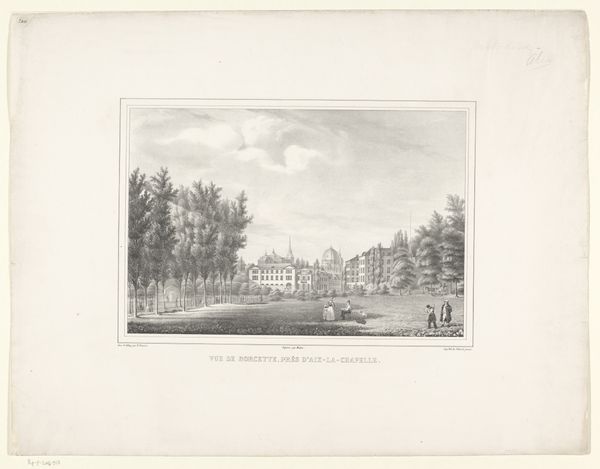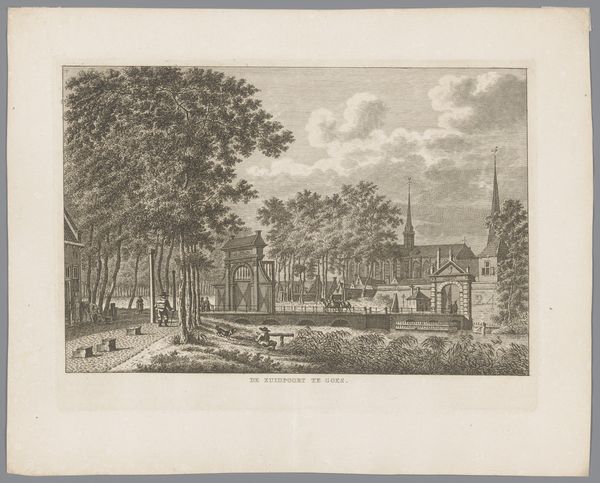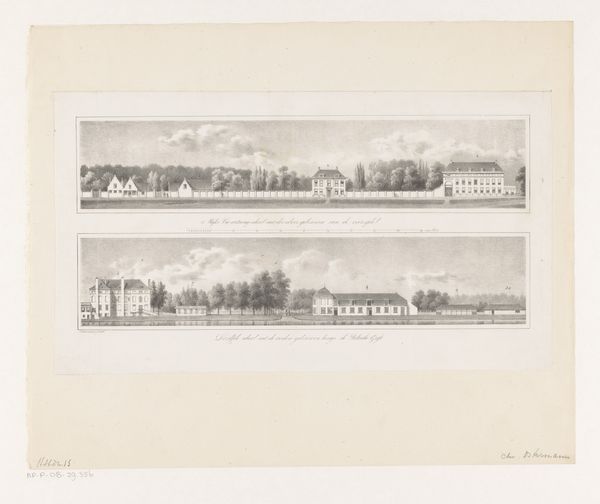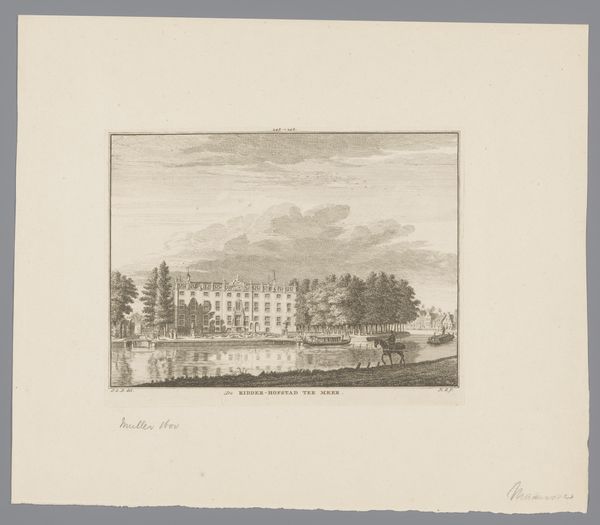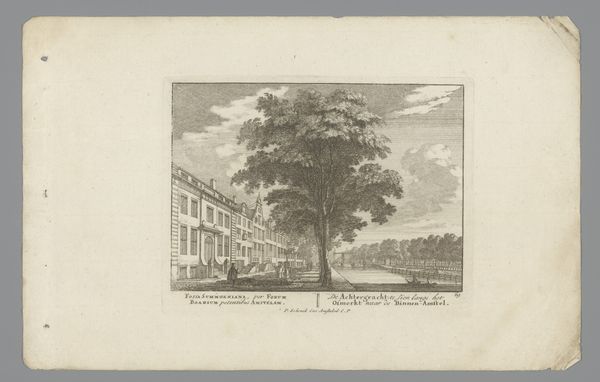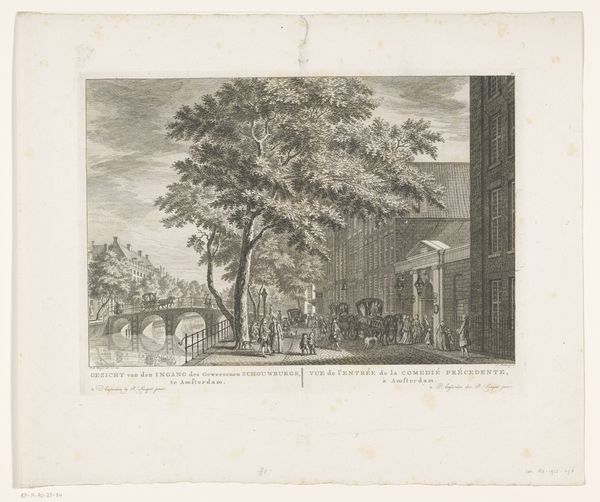
Gezicht op het Luthersche Diaconiehuis in Amsterdam 1753 - 1800
0:00
0:00
hermanuspetrusschouten
Rijksmuseum
Dimensions: height 281 mm, width 385 mm
Copyright: Rijks Museum: Open Domain
Curator: The balance and precision of this etching are captivating. There’s an immediate sense of ordered tranquility. Editor: Indeed. This is "View of the Lutheran Deaconry in Amsterdam," made between 1753 and 1800. Etchings like these provided vital visual records of growing cities, and Deaconries themselves were critical sites. It speaks volumes about how societal welfare programs are represented. Curator: The technique emphasizes this calm. Notice the carefully balanced composition. The buildings anchor the right side of the print while lush trees on the left counterbalance, creating a balanced asymmetry. How would you say that harmony adds to the viewing experience? Editor: Well, beyond its satisfying geometry, the print implicates class disparities and religious charity. Who had access to this sanctuary, and what were the material realities of the people seeking aid? The Deaconry served a specific demographic, didn't it? A closer study reveals that some social groups are not equally accommodated and taken care of within Amsterdam’s structures. Curator: Absolutely. You're pointing to the historical narratives embedded within such seemingly straightforward depictions. From a Formalist viewpoint, this is very refined craftsmanship. Every etched line creates subtle tonal variations, reflecting the period’s technical advancements in printmaking. Editor: Which further implicates that its function, or at least reception, caters to privileged audiences, people with time and money to look, buy, and admire the precision of a carefully crafted object, rather than those depending on access to that building. Curator: These meticulous details allow a study of how technical and social progress is visualized and then, idealized for viewers. What does such care in representation say about the commissioners? Editor: It reflects not only pride but also a keen interest in managing appearances. What's included, and excluded, speaks volumes. It prompts reflection on how charitable works become visible, consumable forms. I appreciate how examining details exposes social structures from centuries past. Curator: It’s like reading a silent archive, understanding what visual syntax emphasizes through line, form, and tonal range. Editor: Indeed, and these structures aren't only formal, but deeply social too, and I feel it allows me to appreciate these archival records so much more.
Comments
No comments
Be the first to comment and join the conversation on the ultimate creative platform.
